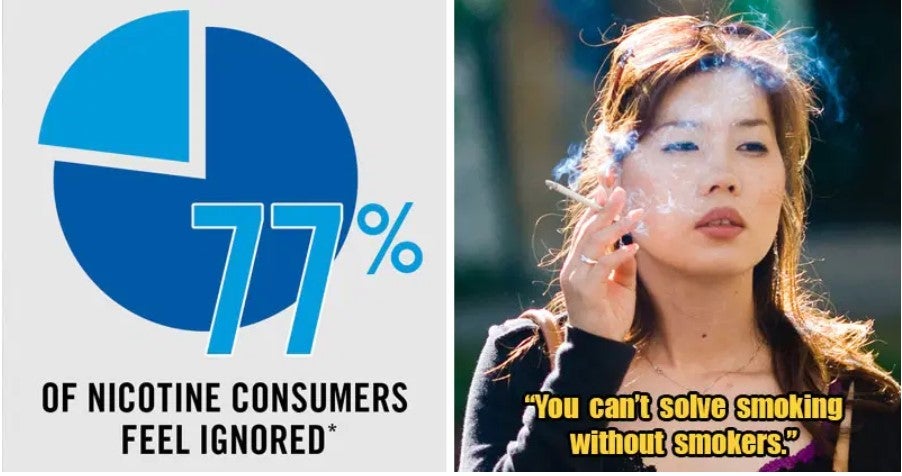In light of the proposal from Health Minister Khairy Jamaluddin to ban cigarette smoking and other electronic and non-electronic smoking products for Malaysians born after 2005, there has been a spike in conversation and debate regarding this. Is it the right move?
Before delving into a debate, first, let us understand the effects of cigarette smoking and the ways to combat these cigarette smoking habits.
Cigarettes are harmful, but why are Malaysians still smoking them? A 2019 survey revealed that there are 4.8 million Malaysian smokers aged 15 years and above, and the majority of them are in the 30-34 years age group. Yet, many individuals are not aware of the full implication of cigarette smoking. If they understand the exact causes of smoking-related diseases, they may be more motivated to ditch cigarettes for good.
Burning and cigarette smoke are the real dangers behind cigarettes
The burning of tobacco is the primary factor in smoking-related diseases. In a cigarette, the tobacco acts as fuel to react with oxygen, creating a self-supported combustion process. This leads to three end products: cigarette smoke, heat, and ashes.

Cigarette smoke has high levels of toxins; this is due to the burning of tobacco at high temperatures. In an article published by American Lung Association, there are over 7,000 chemicals in cigarette smoke and at least 69 of these chemicals are harmful. Some of them are carcinogens like asbestos, arsenic, benzene, and formaldehyde.

In contrast, smoke-free products are less harmful because they do not generate smoke, unlike cigarettes. Instead, they generate aerosol using heating. Since there is no tobacco burning, there are no toxic chemicals released by heating tobacco.
Nicotine – the cause of cigarette addiction
Nicotine is one of the chemicals found in tobacco. Contrary to popular belief, nicotine is not the main cause of smoking-related diseases. In fact, nicotine is less harmful than the other chemicals found in cigarette smoke. Each cigarette stick has about 10 mg of nicotine; smokers only ingest about 1-2mg of nicotine per cigarette because they do not inhale all the cigarette smoke. That being said, nicotine is still not risk-free as it nd is the cause of cigarette addiction.
Nicotine has diverse effects on the body. Nicotine may improve memory and concentration, but it also increases heart rate and blood pressure. Smokers will also experience withdrawal symptoms when they try to quit smoking; some common symptoms include anxiety, depression, and headaches.

This is why minors should not use or have access to any tobacco or nicotine-containing products due to the addictive nature of nicotine.
Still, some may find it difficult to quit smoking due to nicotine addiction. A feasible approach is to switch to smoke-free products that still contain nicotine. These products produce aerosol instead of smoke and hence are less harmful to health. This may even lead smokers to eventually quit smoking.
Cigarette tar – the residue of cigarette smoke
The burning of tobacco also generates cigarette tar, a leftover product from cigarette smoke when nicotine and water are removed. It is a brown substance that stays in the lungs and accumulates as an individual smokes more cigarettes.
Cigarette tar has been the standardized way to measure cigarette yields, but it does not apply to smoke-free products. This is because the chemical composition of the aerosol differs from cigarette smoke.
A high-tar or low-tar cigarette is usually determined by the amount of tar in it. High-tar cigarettes contain 15mg or more of tar, and low-tar cigarettes have about 1-6mg of tar.
But here’s an interesting fact: low-tar cigarettes are not necessarily less harmful.
One of the features of low-tar cigarettes is more air holes, but smokers tend to cover them up. This allows them to inhale more nicotine to satisfy their cravings. Smokers will also take longer and deeper puffs to get the same amount of nicotine. The fact is, low-tar cigarettes can be just as damaging to health as high-tar cigarettes.
As one would expect, cigarette tar is also harmful to health. This sticky substance not only coats the lung but also stains smokers’ fingers and teeth. Over time, it can lead to diseases like lung cancer, emphysema, bronchitis, and more. Smoking cigarettes also:
- Affects the reproduction system
- Increases the chances of cardiovascular and gum diseases.
The less harmful alternative to cigarettes: smoke-free products
To reduce the risks of smoking-related diseases, smokers should either quit smoking or switch to smoke-free products. One smoke-free alternative is e-cigarettes; they are battery-powered devices that heat the liquid and convert it into an aerosol. The liquid in e-cigarettes usually contains nicotine from extraction, flavourings and other additives. E-cigarettes do not contain tobacco.
Smokers can also opt for a heated tobacco product (HTP) which produces aerosol instead of smoke, similar to an e-cigarette. By not burning tobacco, the aerosol contains fewer harmful chemicals compared to cigarette smoke.
Based on the information supported by PMI in the writing of this article and their global head of professional channels Dr Thomas McGrath, studies have shown that as the temperature of tobacco increases, the levels of harmful and potentially harmful constituents also increase.
“By eliminating combustion and reducing the temperature at which the tobacco is heated to, we will significantly reduce the overall levels of harmful and potentially harmful constituents.”
All in all, a better understanding of cigarettes can help smokers change their perspectives on smoking. Some may be motivated to quit smoking while others may seek tobacco harm reduction (THR) strategies since kicking the smoking habit is not always that easy.
However, THR is only effective if smokers completely substitute cigarettes with its alternatives – partial substitution is futile. Hence, if regulations and policy direction can be looked at with a pragmatic approach, practices such as using better alternatives could pave the way for Malaysia to become a smoke-free nation.






































